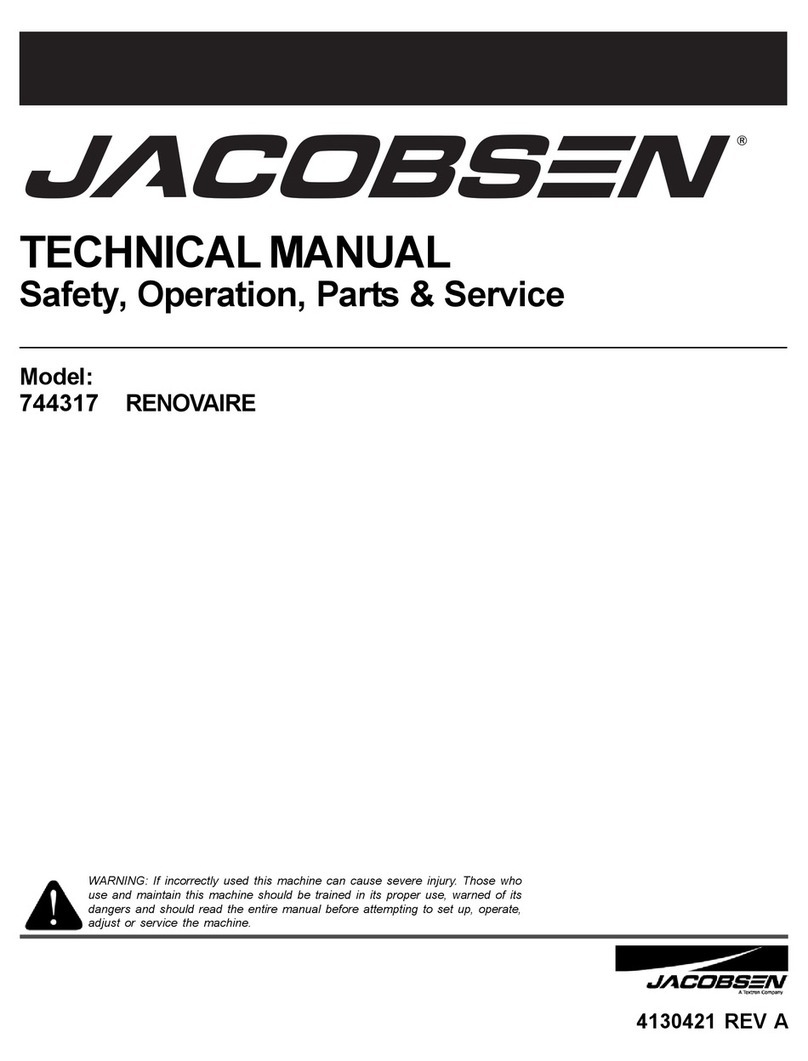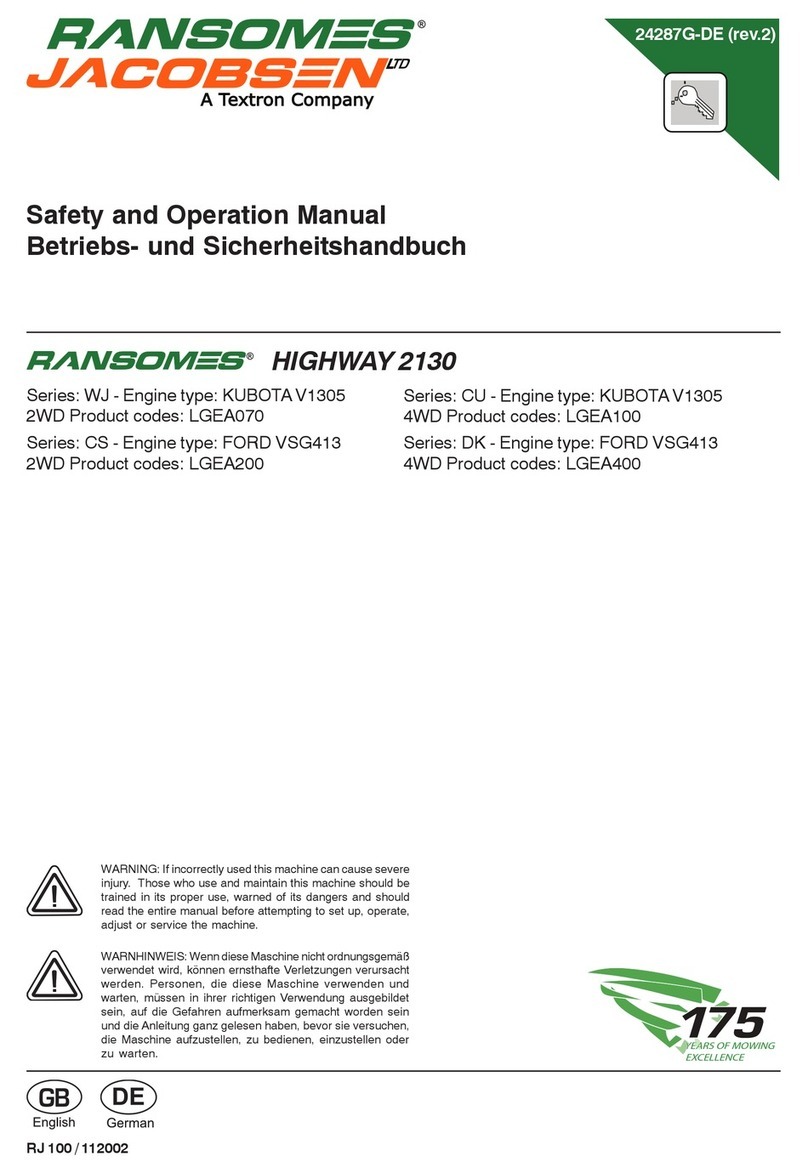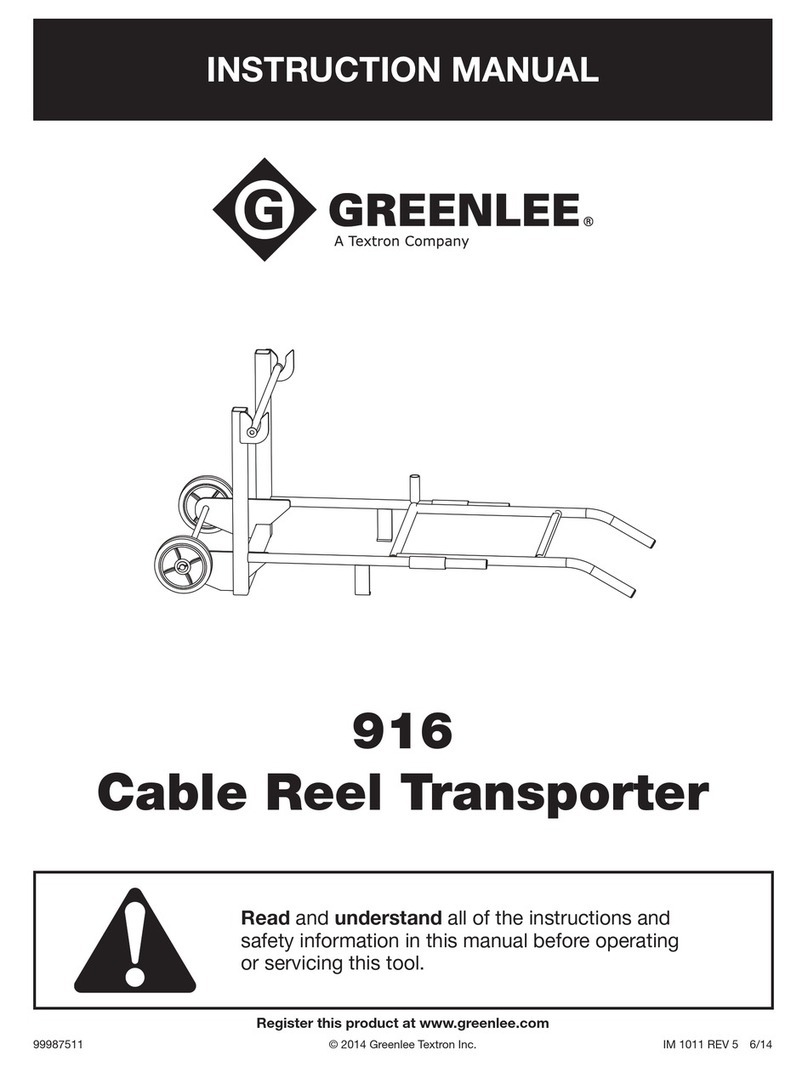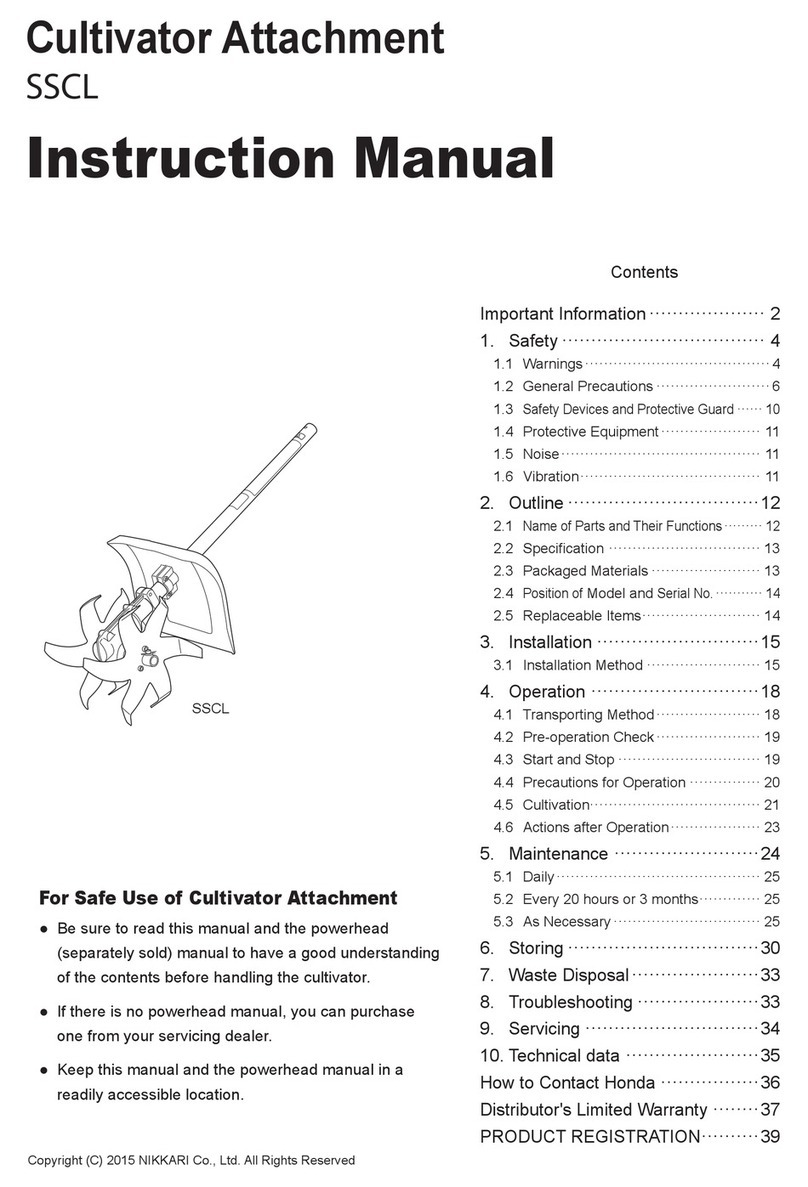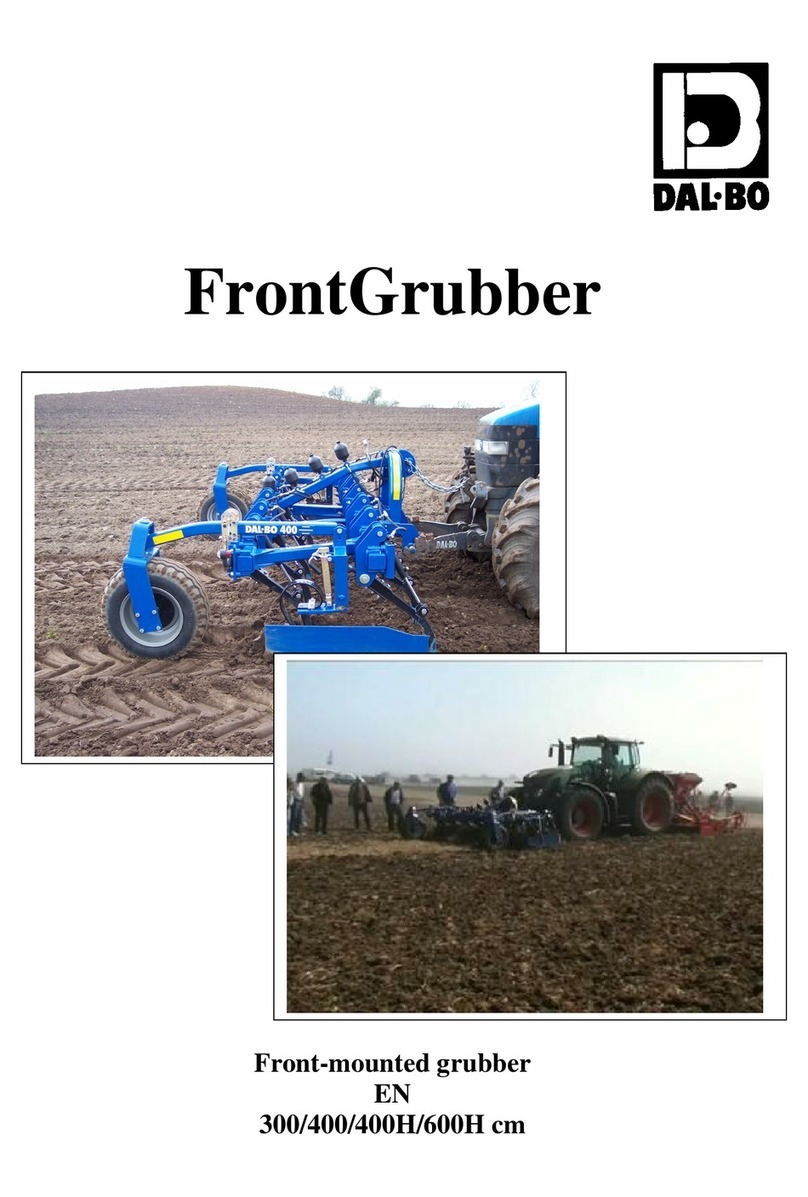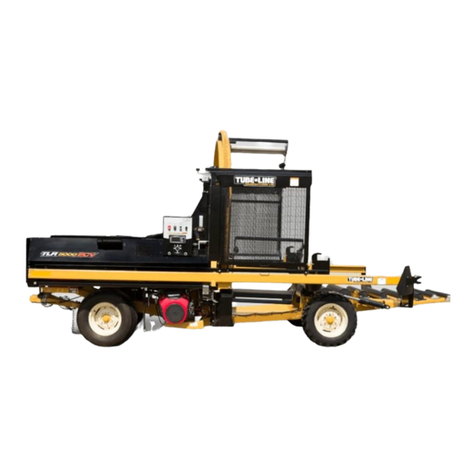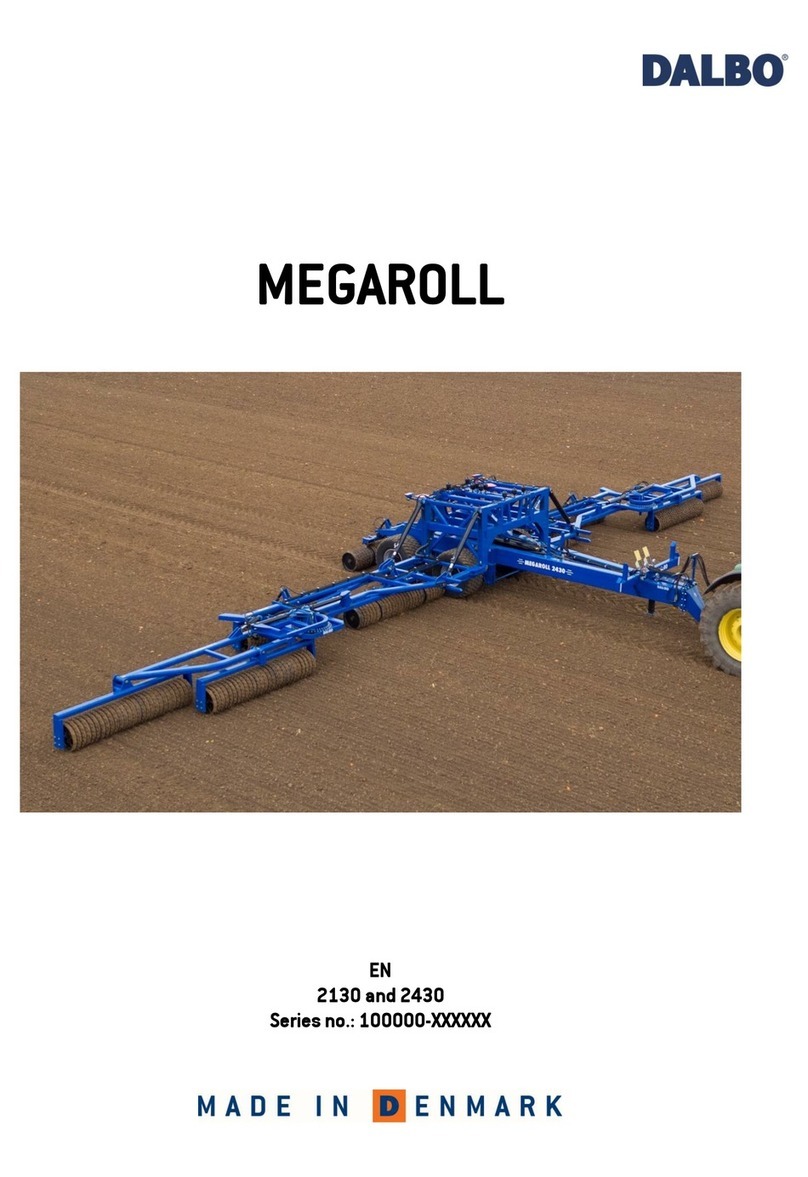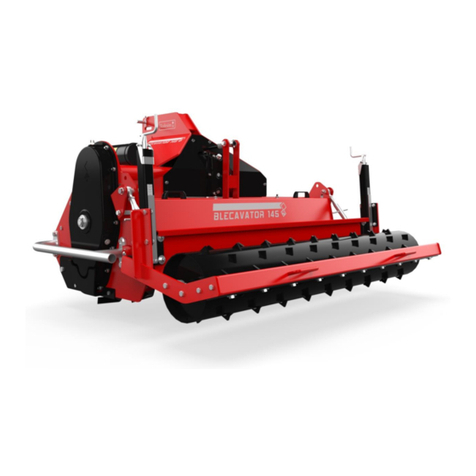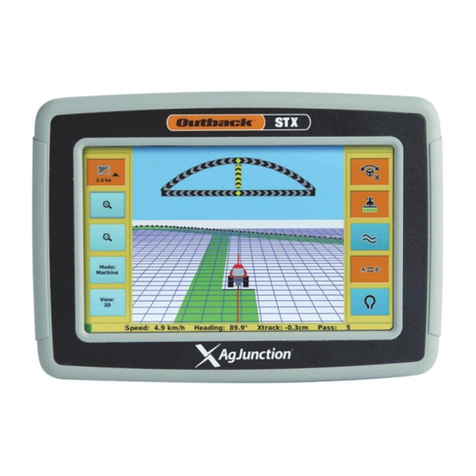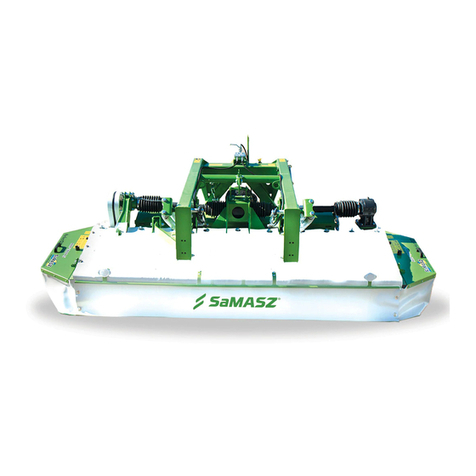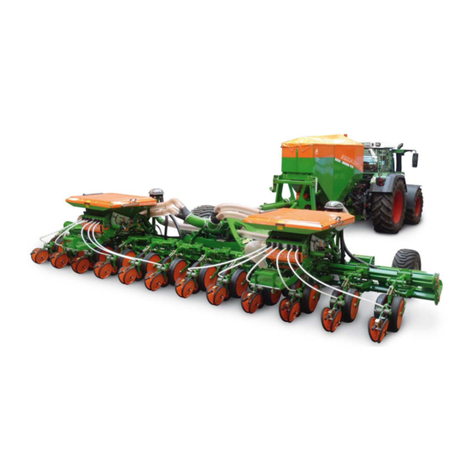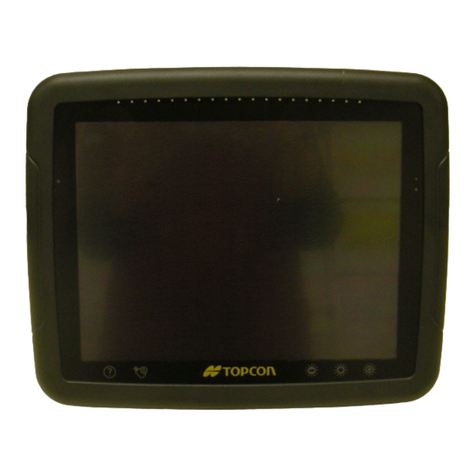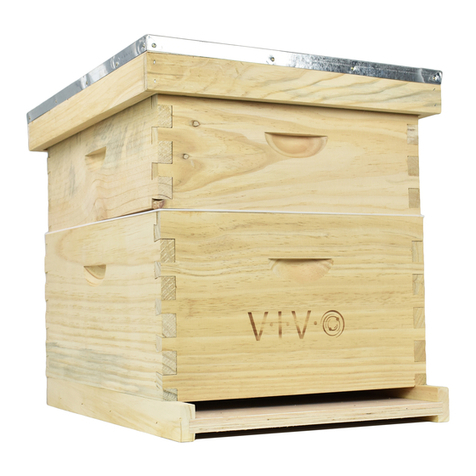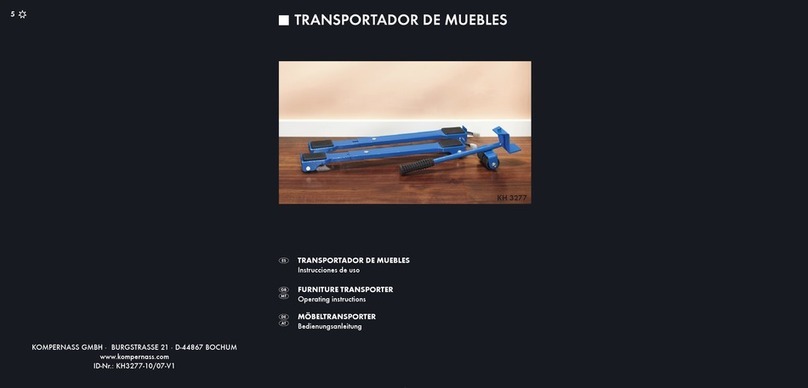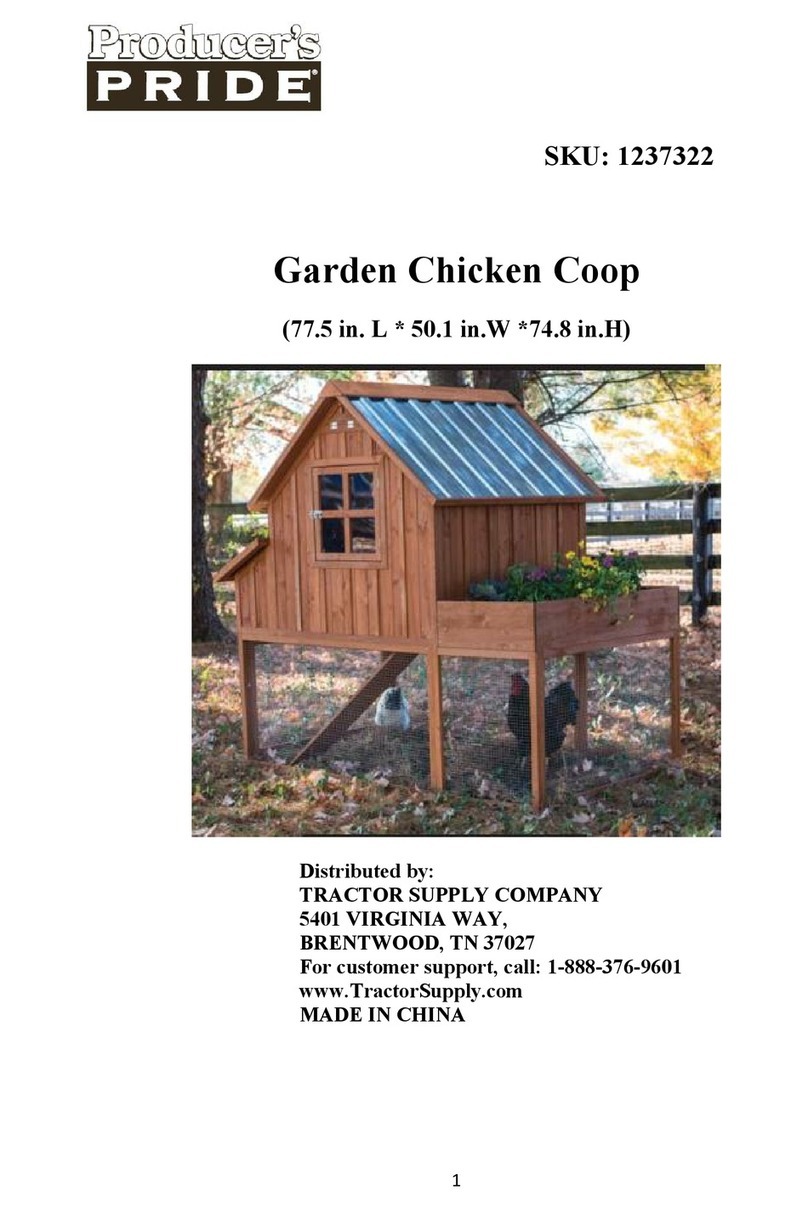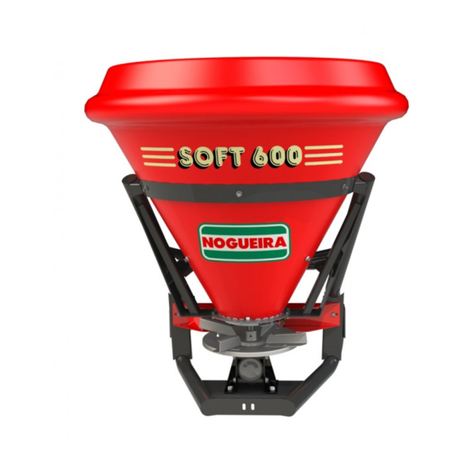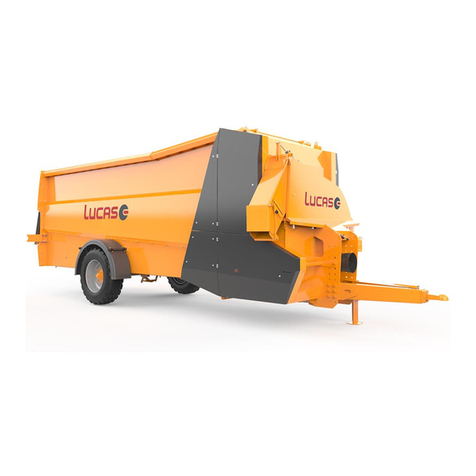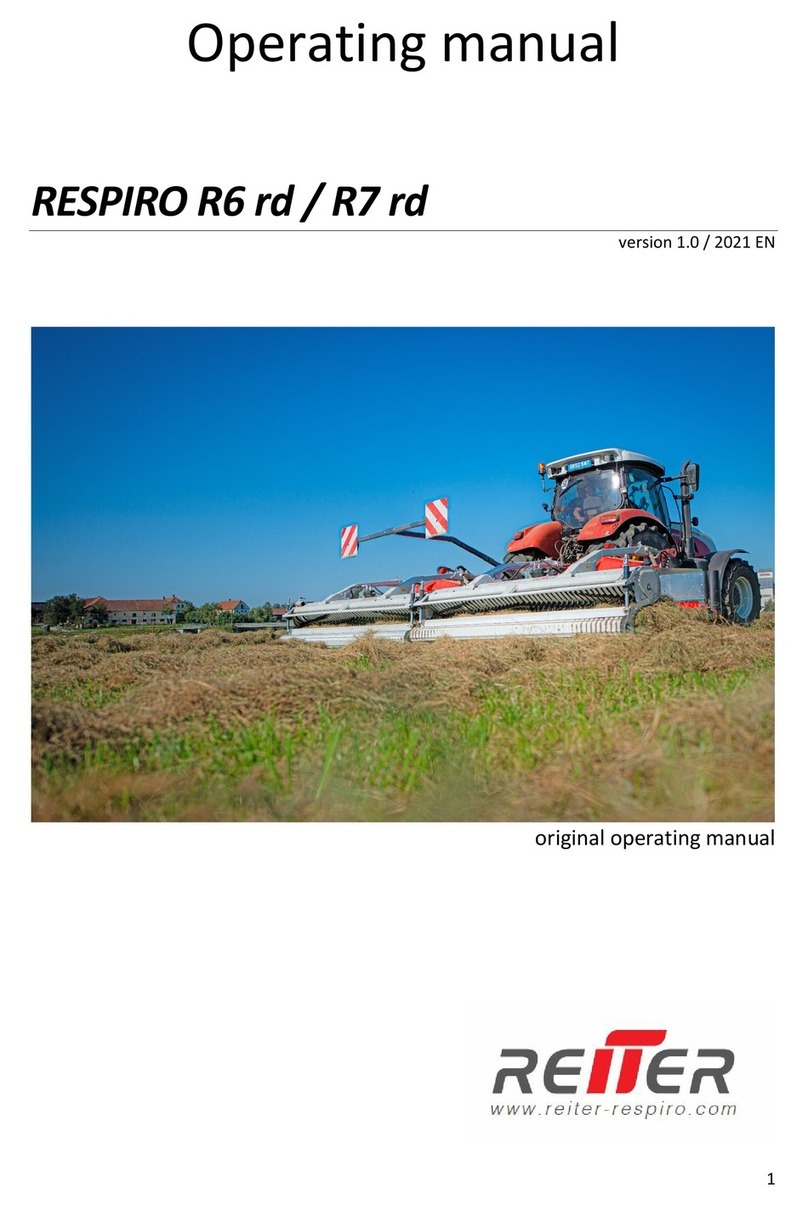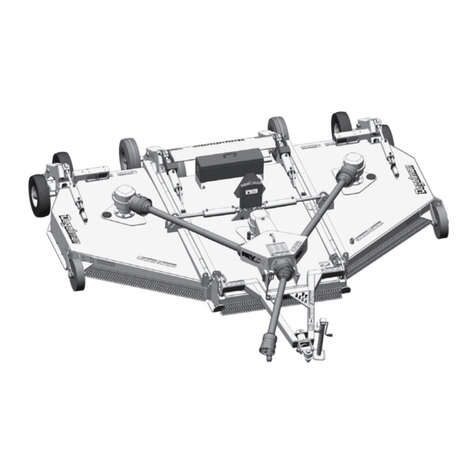Textron JACOBSEN G-Plex II User manual

JACOBSEN
¨
Parts and Maintenance Manual
Nomenclature Des Pieces De Rechange & Manuel De Maintenance
Onderhouds - En Onderdelenhandleiding
Sicherheits und Bedienungs anleitung
Manuale d’istruzioni per I’uso e la Sicurezza
JACOBSEN
AVVERTENZA: Questa macchina può causare gravi infortuni
se viene utilizzata in modo errato. Prima di accingersi ad
approntare, usare, mettere a punto o eseguire la
manutenzione di questa macchina, coloro che la utilizzano
ed i responsabili della manutenzione devono essere
addestrati all’impiego della macchina, devono essere informati
dei pericoli, e devono leggere l’intero manuale.
GB
Part No. 24373G (rev.0)(RJ 100 071700)
FNL D I
WARNHINWEIS: Wenn diese Maschine nicht ordnungsgemäß
verwendet wird, können ernsthafte Verletzungen verursacht
werden. Personen, die diese Maschine verwenden und
warten, müssen in ihrer richtigen Verwendung ausgebildet
sein, auf die Gefahren aufmerksam gemacht worden sein
und die Anleitung ganz gelesen haben, bevor sie versuchen,
die Maschine aufzustellen, zu bedienen, einzustellen oder
zu warten.
WAARSCHUWING: Bij verkeerd gebruik kan deze machine
ernstig lichamelijk letsel veroorzaken. Degenen die de ma-
chine gebruiken en onderhouden moeten worden getraind
in het juiste gebruik ervan, worden gewaarschuwd voor de
gevaren ervan en behoren de volledige handleiding
aandachtig te lezen alvorens de machine bedrijfs-klaar te
maken, te bedienen, af te stellen en/of te onderhouden.
AVERTISSEMENT : Risque de blessures graves en cas
d’utilisation incorrecte de la machine. Les opérateurs et le
personnel d’entretien doivent être formés et conscients des
dangers encourus. Ils doivent lire avec attention le manuel
avant d’essayer de monter, d’utiliser, de régler ou maintenir
la machine.
WARNING: If incorrectly used this machine can cause se-
vere injury. Those who use and maintain this machine should
be trained in its proper use, warned of its dangers and should
read the entire manual before attempting to set up, operate,
adjust or service the machine.
G-Plex II
Series: ZV - Engine type: Kubota model D722B
Product codes:JLHAH001

©2000, Textron Inc. All Rights Reserved

GB-1
JACOBSEN G PLEX II Series: ZV
MAINTENANCE AND PARTS MANUAL
GB
INDEX
Service and Maintenance Pages
Page
Adjustments ....................................... 7
Air Cleaner ..................................... 17–18
Ammeter ............................................ 5
Backlapping ................................... 19–20
Battery............................................... 18
Bedknife Adjustment .......................... 8
Bleeding The Fuel System ............... 12
Cleaning Radiator ............................. 17
Control Pedals ................................... 6
Controls ............................................. 5
Cutting Head Levaling ....................... 9
Cutting Head Maintenance ............... 19
Cutting Head Serial Number .............. 3
Cutting Head Timing ......................... 11
Dipstick, Engine Oil .......................... 15
Engine Access .................................. 14
Engine Break–In ............................... 13
Engine Cooling System .................... 17
Engine Oil Filter ................................ 15
Engine Oil Level ............................... 15
Fuel Recommendations .................... 13
Fuses ................................................ 18
Headlight Switch ................................ 5
Height Of Cut ..................................... 8
Hour Meter ......................................... 5
Hydraulic Diagram ............................ 22
Hydraulic Pump Bypass Valve .......... 6
Hydraulic System ........................... 16–17
Identification Numbers ....................... 3
Ignition Switch.................................... 5
Jump Starting.................................... 18
Leveling Linkage, Front Heads .......... 9
Lube Chart ........................................ 21
Maintenance Guide ........................... 13
Model Number ................................... 3
Mow/Transport Speed Control ........ 9–10
Mowing Speed Adjustment ............. 9–10
Oil Filter (hydraulic) .......................... 17
Oil type, hydraulic ............................. 16
Oil Warning Light, Engine ................. 5
Parking Brake .................................... 6
Pedals
Mow/Lift ............................................. 6
Page
Brake .................................................. 6
Speed/Direction ................................. 9
Pre–Heat Switc .................................. 5
Rear Swingout Arm ............................ 7
Serial Number .................................... 3
Service and Maintenance ................. 13
Specifications ..................................... 4
Starting The Engine
Diesel ................................................ 12
Gasoline ............................................ 11
Storage ............................................. 20
Temperature Gauge .......................... 5
Throttle ............................................... 5
Tire Pressure .................................... 19
Towing The Unit ................................ 13
Troubleshooting ................................ 23
Turf Protection System (accessory) .17

GB-2
JACOBSEN G PLEX II Series: ZV
MAINTENANCE AND PARTS MANUAL
GB
PARTS INDEX
SECTION TITLE PAGE
1CHASSIS AND COVERS .................................................................... 120
2POWER ASSY DIESEL ....................................................................... 122
3RADIATOR (DIESEL) .......................................................................... 124
4AIR CLEANER (DIESEL) .................................................................... 126
5a FUEL & HYDRAULIC RESEVOIRS .................................................... 128
5b HYDRAULIC TANK FITTINGS ............................................................ 130
5c FUEL SYSTEM .................................................................................... 132
6 OIL COOLER MOUNTING ................................................................... 134
7HEAD LIFT AND PUMP CONTROL LINKAGE ................................... 136
8HYDRAULIC PUMP AND VALVES ..................................................... 140
9HYDRAULIC LIFT CIRCUIT ................................................................ 142
10 HYDRAULIC REEL CIRCUIT.............................................................. 144
11 HYDRAULIC WHEEL DRIVE CIRCUIT .............................................. 146
12 HYDRAULIC POWER STEERING ...................................................... 148
13 CONTROL ARM................................................................................... 150
14 LIFT ASSEMBLY - FRONT CUTTING HEADS ................................... 152
15 LIFT ASSEMBLY - REAR CUTTING HEAD ........................................ 154
16 MOW / RAISE PEDAL AND SPEED CONTROL PEDAL .................... 158
17 MOW SPEED CONTROL .................................................................... 160
18 BRAKE PEDAL ................................................................................... 162
19 SEAT .................................................................................................... 164
20 DECALS .............................................................................................. 166
21 CONTROL PANEL AND ELECTRICAL COMPONENTS (US) ........... 168
22 ELECTRICAL COMPONENTS (US) ................................................... 172
21a CONTROL PANEL AND ELECTRICAL COMPONENTS (UK) ........... 174
22a ELECTRICAL COMPONENTS (UK) ................................................... 176
23 WHEELS AND REAR HUB ................................................................. 178
24 COUNTER WEIGHT AND MOTOR MOUNTING ................................. 180
25 REEL ASSEMBLY - 1 .......................................................................... 182
26 REEL ASSEMBLY - 2 .......................................................................... 184
27 REAR ROLLER ................................................................................... 186
28 REAR ROLLER ................................................................................... 188
29 CUTTING HEAD .................................................................................. 190
30 ACCESORY - ROTARY REAR BRUSH 892327 ................................. 194
31 ACCESORY - FRONT ROLL SCRAPER 892329 ............................... 196
32 ACCESORY ......................................................................................... 198
33 ACCESORY ......................................................................................... 200
34 GROOMER ACCESORY ...................................................................... 202
35 VERTICUTTER ACCESORY ............................................................... 206
36 ACCESORY - REAR ROLLER SCRAPER ......................................... 210
Index To Parts Pages

GB-3
JACOBSEN G PLEX II Series: ZV
MAINTENANCE AND PARTS MANUAL
GB
DIESEL ENGINES
The diesel engine’s serial number is stamped into
the block directly below the injector pump (See Fig.
4).
1
Figure 4
1. Diesel Engine Serial Number
CUTTING HEAD SERIAL NUMBERS
Identification numbers for each individual cutting
head are on the nameplate decal located on the
right side panel (See Fig. 5).
NAME PLATE
DECAL
Figure 5
IDENTIFICATION
THESE IDENTIFICATION NUMBERS MUST
APPEAR ON ALL CORRESPONDENCE
CONCERNING THIS UNIT.
MODEL NUMBER & SERIAL NUMBER
The identification nameplate decal is located under
the seat at the front of the machine on UK built
machines.
Figure 1
1. Identification Nameplate Decal
ENGINE IDENTIFICATION NUMBERS
To gain access to the engine, loosen the two hand
knobs above the rear fork.Raise the fuel tank frame
(rear section) and pivot the rod beneath the fuel
tank down and secure it in the cup next to the fork
(See Fig. 2). DO NOT remove fuel tank cap while
tank is in raised position.
1
2
Figure 2
Fuel Tank in Raised Position
1. Support Rod
2. Hand Knobs

GB-4
JACOBSEN G PLEX II Series: ZV
MAINTENANCE AND PARTS MANUAL
GB
SPECIFICATIONS
(subject to change without notice)
Engine Kubota model D722B-1, 18 hp. three
cylinder, liquid cooled diesel engine
High Idle Speed 3400 RPM
Low Idle Speed 1500 RPM
(See engine manual for additional
specifications)
Speed (maximum):
Transport 12 Km/h
Mowing 6.1 Km/h
Reverse 3 Km/h
Hydraulic System:
Traction Drive Pump Sundstrand 15-
Series
Traction Motors: Parker-Ross ME10
Reel Drive Pump: J.S. Barnes W900
.488 in3/Rev (8cc/Rev)
Reel Motors: J.S. Barnes W600
.73 in3/Rev (12cc/Rev)
Reservoir Capacity: 18.2 L
Total System Capacity: 25.7 L
Jacobsen Turf Protector™
9.7 L PN 65363
18.9 L PN 65352
208 L PN 65354
(Alt. Texaco Rando HDZ-32)
See oil selection guide
Hydraulic Filters
2 ea, 25 micron (suction) PN 522972
Dimensions:
Width Of Cut: 1.6m
Overall Width (w/reels and catchers): 1.9m
Overall Length (w/reels and catchers):
2.5m
Overall Height: 1.25m
Wheel Base: 1.26m
Front Wheel Tread (width): 1.2m
Weight w/o reels: 535 kg
Weight w/reels: 631 kg
Fuel Tank Capacity: 31 L
Coolant Capacity: 3.8 L
Battery 12 volt
BCI Group Size 24
Cold Cranking Amps (min.) 430
Reserve Capacity Minutes (min.) 70
Ground Terminal Polarity Negative
with SAE taper posts
Brakes
Positive Hydrastatic Braking
6” (152 mm) Caliper Disk Parking Brake
Eletrical:
Alternator: 40 AMP
Steering:
Rear Wheel Steering
Power Steering, 2.5 turns lock to lock
13” (330mm) dia. Steering Wheel
Tyres: 20 x 10.00 - 10 Smooth tread
VIBRATION LEVEL
The machine was tested for whole body and hand/
arm vibration levels. The operator was seated in
the normal operating postion with both hands on the
steering mechanism. The engine was running and
the cutting device was rotating with the machine
stationary.
Hand / Arm acceleration level : 2.0 m/s2
Whole body acceleration level
X axis : 0.051 m/s2
Y axis : 0.085m/s2
Z axis : 0.204 m/s2
WARNING
•This manual deals with service and
maintenance functions. These functions
must be performed as specified and must
be done by properly trained service
personnel only.

GB-5
JACOBSEN G PLEX II Series: ZV
MAINTENANCE AND PARTS MANUAL
GB
CONTROLS
(Diesel Models)
4
2
7
6
5
3
1
10
8
9
Figure 7
1. Ammeter
2. Hour Meter
3. Headlight Switch
4. Engine Oil Warning Light
5. Ignition Switch
6. Throttle
7. Turf Protection System (optional)
8. Pre–Heat Switch and Glow Plug
Light
9. Temperature Gauge And
Warning Light
10. Reel Enable Switch
Ammeter - indicates amount of electrical flow at the
battery. Under normal operating conditions
the needle will be on the plus (+) side of
the meter, showing that current is being
supplied to the battery.
At idle speed, the indicator may be at zero
or on the negative (-) side. A continuous
negative reading at normal operating
speed indicates a malfunction in the
charging system that should be checked
immediately.
Headlight Switch - turns the headlights on and off.
Engine Oil Warning Light - will come on when the
engine oil pressure is too low for operation.
Ignition Switch - has four positions:
OFF - prevents all electrical functions from
operating. Switch must be in the OFF
position to remove the key.
ON - for normal operation.
START - engages the starter. Release the
key after engine starts (the switch
automatically returns to ON).
ACC. - has no function on this unit.
NOTICE
•If the engine fails to start, or if it “dies” for
any reason, the ignition switch must be
returned to the OFF position before
restarting is attempted. This feature
prevents damage to the starter and
flywheel teeth that can occur if the starter
is engaged while the engine is running.
Throttle - Push all the way forward for normal
engine operating speed, and all the way
back for idle.
Hour Meter - records the number of hours the
engine has run. Use the hour meter to
manage a good scheduled maintenance
program (refer to the Maintenance Guide).
Pre–Heat Switch and Glow Plug Light -With key
switch ON, push up/forward and hold the
pre–heat switch until the glow plug light
goes out (Diesel Only).
Temperature Gauge and Warning Light -gauge
indicates coolant temperature and light
warns of overheat situation (Diesel Only).
Turf Protection System - can be installed as an
option to warn the operator if a leak in the
hydraulic system is detected.
REAR SWING OUT ARM
NOTICE

GB-6
JACOBSEN G PLEX II Series: ZV
MAINTENANCE AND PARTS MANUAL
GB
CONTROL PEDALS
The Direction/Speed Pedal (See Fig. 8) controls
speed and direction. Depress front of pedal to go
forward, depress back of pedal to go backward.
Increased movement of the pedal will increase
speed.
To slow and stop the unit, release the pedal
completely. Proper braking is provided by
hydrostatic pressure. If more braking is required,
press on the brake pedal.
WARNING
•DO NOT attempt to force the direction
control pedal to the neutral (stop) position
or to change directions before coming to a
complete stop. Abrupt stops or changes in
direction may cause injury.
1
2
Figure 8
1. Direction/Speed Pedal
2. Brake Pedal
PARKING BRAKE PEDAL
The Parking Brake can be engaged by depressing
the brake pedal until the unit is at a complete stop.
Once the unit is stoped, push the parking brake
latch foward to hold the brake pedal. Disengage the
parking brake by depressing and releasing the brake
pedal.
1
2
Figure 9
1. Brake Pedal
2. Park Brake Latch
NOTICE
•To reduce fatigue during normal forward
operation, the operator’s heel should rest
on the floorboard next to the pedal (not on
the lower part of the pedal).
The Mow/Lift Pedal (See Fig. 10) lowers and raises
the cutting heads.
To Lower the Heads: Depress the front of the pedal
into the lowered head position. If reel enable switch
is on, reel rotation starts when the heads are
lowered.
To Raise the Heads: Depress the back of the pedal
into the raised head position. Reel rotation stops
when the heads are raised.
1
Figure 10
1. Mow/Lift Pedal
HYDRAULIC PUMP BYPASS VALVE
The Bypass Valve allows the unit to be pushed or
towed. Turn the handle on the bottom of the pump
counterclockwise (as viewed from the bottom of the
pump) to open the valve. After moving the unit,
close the valve by turning the handle clockwise.
1
Figure 11
1. Bypass Valve Handle
NOTICE
•The bypass valve must be tightly closed
for normal operation or a significant loss of
speed will occur and may cause serious
damage to the hydrostatic pump.

GB-7
JACOBSEN G PLEX II Series: ZV
MAINTENANCE AND PARTS MANUAL
GB
•The rear swing out arm is to allow you
easy access to the rear cutting head. The
cutting heads MUST BE in the raised
position. DO NOT swing the arm out with
the cutting heads in the lowered position.
WARNING
•To avoid the possibility of serious injury,
ALWAYS be properly seated in the
operator’s seat while the engine is running.
•To avoid the possibility of serious injury,
ALWAYS switch the reel enable switch to
the off position, stop the engine, remove
the key, and set the parking brake each
time you leave the operators seat.
1. The grass catcher MUST BE removed
before you swing the arm out.
2. Release the draw latch (See Fig. 12).
3. Pull the handle and swing the rear arm and
cutting head out.
4. Once you are properly seated in the
operator’s seat, restart the unit and lower
the cutting heads.
5. Shut off the unit and remove the rear
cutting head for service.
6. Once you have completed your servicing,
secure the cutting head to the rear arm.
7. Once you are properly seated in the
operator’s seat, restart the unit and raise
the cutting heads.
8. Shut off the unit and swing the rear arm
back under the unit and secure the arm
with the draw latch (See Fig. 12).
WARNING
•NEVER attempt to drive the unit while the
rear arm is not secured by the draw latch.
Driving the unit with the rear arm out, will
result in damage to the unit, or causing
serious injury or death of you the operator
or bystanders.
1
2
Figure 12
1. Draw Latch
2. Handle
ADJUSTMENTS
WARNING
•Adjustment procedures must be performed
as specified by properly trained service
personnel ONLY. If assistance is needed,
contact your local Jacobsen Dealer.
•To avoid the possibility of serious injury,
switch the reel enable switch to the off
position, lower the heads, stop the engine,
remove the key, and set the parking brake
BEFORE making any adjustment.
•NEVER rotate the cutting reel by pushing
it with your hands or fingers. Fingers can
become caught between the reel and the
frame resulting in serious injury. Use a
ratchet with a 9/16” socket on the end of the
cutting head shaft to rotate the reel during
adjustment and testing (See Fig. 13).
1
Cutting Head Shown
with
Rear Rotary Brush Ac
cessory mounted
Figure 13
1. Rotate Cutting Reel with this Screw Head

GB-8
JACOBSEN G PLEX II Series: ZV
MAINTENANCE AND PARTS MANUAL
GB
BEDKNIFE ADJUSTMENT
For this adjustment, the backlap valve control lever
must be in the center “neutral” position so
that the reels can be rotated manually.
WARNING
•To avoid the possibility of serious injury,
NEVER attempt any cutting head
adjustment while the engine is running.
Any adjustment to the clearance between the reel
blades and the bedknife should be done at the
leading end of the reel first (the end at which each
individual blade first crosses the bedknife). Then at
the opposite end of the reel.
1. Loosen the lower adjustment screws at
each end by turning them approximately 1/
4 turn counterclockwise (See Figure 14).
2. While rotating the reel backwards, turn the
upper adjustment screws (leading end
first) until there is approximately .001²
(.025mm) clearance. After adjusting both
ends, recheck the leading end.
NOTICE
•Too much clearance between the bedknife
and the blades will result in poor cutting
quality. Too little clearance will cause
excessive wear to the cutting edges and
may cause damage to the bedknife, reel
blades or other components.
1
2
Figure 14
1. Upper Adjustment Screw
2. Lower Adjustment Screw
3. Rotate the reel forward. The reel must turn
freely and you should just be able to hear
the reel blades making slight contact with
the bedknife.
4. After the bedknife is properly adjusted,
tighten the lower adjustment screw at each
end.
5. Test the cutting head by holding two strips
of newsprint perpendicular to the bedknife.
Rotate the reel with a wrench. The reel
must turn freely and each blade on the reel
should cut one of the two strips of paper.
HEIGHT OF CUT
NOTICE
•All three cutting heads MUST be accurately
set at the same height of cut to insure an
even cut.
•Bedknife adjustment must be made before
setting the height of cut.
1. Set the height of cut on the gauge block
(Part No. 892010) by turning the wingnut
until the distance between the bottom of
the screw head and the top of the gauge
block equals the desired height of cut (See
Fig. 16).
2. Loosen the locking nut on one of the front
roller adjusting brackets just enough to
allow adjustment (See Fig. 15).
1
Cutting Head Shown
with
Rear Rotary Brush Ac
cessory mounted
Figure 15
1. Loosen Locking Nut
3. Hold the gauge block across the bottom of
both the front and rear rollers near the
roller adjustment bracket and adjust the
front roller until the cutting edge of the
bedknife comes up to touch the bottom of
the gauge screw head (See Fig. 16).
Front Roller
Rear Roller
Bedknife
Gauge Block
Gauge
Screw
Head
Set Height Of Cut
(Part No. 892010)
Figure 16
Height of Cut Adjustment
4. Tighten the locking nut and repeat the
procedure at the other end. After
adjustment has been made at both ends,
go back and recheck both ends.
5. Make sure all three cutting heads are set
without changing the height of the gauge
screw.

GB-9
JACOBSEN G PLEX II Series: ZV
MAINTENANCE AND PARTS MANUAL
GB
LEVELING LINKAGE FOR THE FRONT CUTTING
HEADS
WARNING
•This procedure must be performed as
specified and only by properly trained
service personnel.
•During this entire procedure the reel
enable switch must be in the off position.
Turning on the reel enable switch will
result in damage to the unit and/or serious
personal injury or death to you the
operator or bystanders
NOTICE
•The dimensions in figure 17 are factory
preset and the leveling linkage should not
need adjusting. After some time the
linkage may require some adjusting. If it is
required, only make adjustments on the
adjusting connector (See Fig. 17).
1. With the unit on a level surface
(recommend concrete surface), place
cardboard underneath all three of the
cutting heads.
2. An additional person is needed to stand
10’ (3 M) in front of the unit to check on
how level the front heads are when
lowering. Lower the cutting heads and
ensure the entire width of the front heads
are parallel with the level surface as the
heads touch the cardboard.
3. If they do not touch evenly, make an
adjustment using the adjusting connector.
Repeat procedure as needed until the two
front heads touch evenly on the level
surface.
NOTICE
•On the end of the leveling rod with the
springs and lock collar, the dimensions are
factory set and should never have to be
changed. (See Fig. 17)
1/2"
(13mm)
3/32"
(2.4mm)
ADJUSTING
CONNECTOR
SECURES TO
LIFT ARM
LOCK
COLLAR
4 5/8"
(117mm)
CONNECTS TO
MAIN FRAME
DO NOT ADJUST
SPRINGS
JAM
NUT
1
LEVELING LINKAGE
Figure 17
1. Adjusting Connector
MOW/TRANSPORT SPEED CONTROL
When cutting heads are raised completely, the
wheel drive speed range is 0 – 7.5 mph (0 – 12 Km/
hr). Speed is controlled by use of the direction/
speed control pedal as described in control pedals
section.
When cutting heads are lowered, the forward
movement of the direction/speed control pedal is
restricted by the automatic mow speed control
linkage (the bellcrank stop screw contacts the foot
pedal tab which rotates the pedal upward. This in
turn reduces the ground speed of the unit for
mowing). The mow speed range is 0 – 3.8 mph (0 –
6.1 Km/hr).
1
Figure 18
1. Direction/Speed Pedal
ADJUSTING MOW SPEED
To determine mow speed, run a time check on how
fast the unit travels in a distance of 50’ (15.24 M).
Prepare a level surface with enough room to start
and end beyond the 50’ marks.
Place a stake in the ground where you want to begin
timing the unit. Measure and place anther stake at a
distance of 50’ (15.24 M). Lower the cutting heads
and press the direction pedal forward so the unit is
traveling at full throttle (the cutting heads should be
in the neutral position when timing the unit).
Begin timing the unit when the center of the front
tire aligns with the first stake. Stop timing when the
center of the front tire aligns with the stake placed at
50’ (15.24 M). Estimated time for 3.8 mph (6.1 Km/
hr) will be approximately 8.8 to 9.2 seconds. If there
is a significant difference in the times listed above,
you can adjust the mow speed as follows.

GB-10
JACOBSEN G PLEX II Series: ZV
MAINTENANCE AND PARTS MANUAL
GB
WARNING
•This procedure MUST be performed as
specified and only by properly trained
service personnel.
Adjusting the speed control screw out (increasing
length) will reduce the mow speed. Adjusting the
speed control screw in (shortening length) will
increase mow speed.
Determine which direction to adjust the mow speed
screw. Loosen the locking nut and adjust speed
control screw, snug up the locking nut and run the
time test again, repeat as necessary. When correct
mow speed has been obtained, tighten the locking
nut (See Fig. 19).
2
1
Figure 19
1. Mow Speed Adjustment Screw
2. Locking Nut
TO SET BELLCRANK STOP SCREW:
NOTICE
•The bellcrank stop screw has been set at
the factory and should NOT require
adjustment. If stop screw is loosened or
removed, it MUST be properly installed
and adjusted prior to unit operation.
1
2
Figure 20
1. Bellcrank Stop Screw
2. Center Foot Panel
Remove the screws securing the center foot panel
and remove panel (this will allow access to the
lockout link angle).
Loosen the nut on the bellcrank stop screw just
enough to allow the screw to be slid to the left of the
slot (See Fig. 21). Rotate bellcrank clockwise (as
viewed from above) and hold the bushing on the
lockout link angle to the left end of the lockout link
slot (See Fig. 22).
2
1
AS VIEWED
FROM BELOW
BELLCRANK
STOP SCREW
3
Figure 21
1. Bellcrank
2. Lockout Link Angle
3. Lockout Link slot
POSITIONED
TO THE
LEFT OF SLOT
LOCK
OUT LINK
Figure 22
Position Bushing to Left of Slot
Slide the bellcrank stop screw to the left of the slot
located in the foot panel (See Fig. 20) making sure
the bellcrank contacts the stop screw. With the
screw held tightly against the bellcrank, tighten the
stop screw nut.
Install the center foot panel.

GB-11
JACOBSEN G PLEX II Series: ZV
MAINTENANCE AND PARTS MANUAL
GB
CUTTING HEAD LIFT AND LOWER TIMING
Cutting head lift and lower timing are controlled by the
sequence control and normal open limit switches.
The sequence control switch, located above the left
front cutting head, (See Fig. 23) allows hydraulic oil to
flow to the rear lift cylinder. This sets the proper
timing for the lifting and lowering between the front
heads and the rear head. The limit switches, located
above the rear cutting head, (See Fig. 23) shuts the
oil flow off when the rear cylinder is fully extended or
retracted.
1. With the cutting heads lowered and
cylinders fully retracted, check the
dimension of 1/16” (1.6mm) between the
cam and ear and the same dimension
between the switch bracket and ear (See
Fig. 23).
1
1/16" (1.6mm)
1/16" (1.6mm)
(CYLINDER FULLY RETRACTED)
HEADS IN LOWERED POSITION
LOCATED ABOVE LEFT FRONT CUTTING HEAD
2
3
Figure 23
1. Sequence Control Switch
2. Cam
3. Ear of Bracket
2. Once you have completed setting the
sequence control switch move to the limit
switches above the rear head (See Fig.
24).
3. With the heads lowered and cylinders fully
retracted check the dimension of 1/8”
(3.2mm) between the cam and ear. While
they are still retracted, check the
dimension of 8 7/16” (214mm) from pin to
pin (See Fig. 24).
NOTICE
•BE SURE the retract switch opens at 8 7/
16” (214mm) measured from pin to pin. If
it does not open, hydraulic pressure will
continue and damage the system. From
pin to pin check the dimension of 11 5/16”
(287mm) when the heads are raised and
the cylinders are fully extended (See Fig.
24).
NOTICE
•BE SURE the extend switch opens at 11 5/
16” (287mm) measured from pin to pin. If
it does not open, hydraulic pressure will
continue and damage the system.
2
1
11 5/16" (287mm) EXTENDED
8 7/16" (214mm) RETRACTED
1/8" (3.2mm)
LOCATED ABOVE REAR CUTTING HEAD
3
4
Figure 24
Normally Closed Limit Control Switches
1. Extend Switch
2. Retract Switch
3. Cam
4. Ear of Bracket

GB-12
JACOBSEN G PLEX II Series: ZV
MAINTENANCE AND PARTS MANUAL
GB
STARTING THE ENGINE
When starting a diesel engine for the first time, after
prolonged storage or if the fuel tank is allowed to run
dry, the fuel system must be bled before attempting
to start the engine. Refer to Bleeding The Fuel
System below.
After bleeding the system (if required):
1. Operator must be properly seated in the
operator’s seat (for maintenance purposes
only, and when operated by trained service
personnel the engine may be started
without the operator seated if the reel
control lever on the backlap valve is in the
backlap position refer to Fig. 36, on page
20).
2. Make sure foot is off direction/speed
control pedal. The mow raise pedal must
be in the raised position and the reel
enable switch must be in the off position
before the engine will start.
3. Push hand throttle lever forward to a
“MIDDLE” position.
4. Insert key in ignition switch and turn to ON
position.
5. Push and hold the pre–heat switch
forward. The red indicator light will come
on. When the light goes out, release the
pre–heat switch and start the engine (If the
engine has been running and is already
warm, there should be no need to pre heat
the glow plugs).
6. After the engine starts, allow it to warm up
for at least one minute.
NOTICE
•The starter motor should never be run for
more than 10 seconds. If the engine does
not start after operating the starter for 10
seconds, stop the starter. Wait for 30
seconds and repeat the start sequence.
•Do not use ether or starter fluid; severe
engine damage may occur.
7. After the engine starts, check the
following:
•Make sure the oil pressure light goes off
•The exhaust should be colorless or
slightly dark when engine is under load
NOTICE
•If the oil light or water temperature light
and buzzer come on during operation, stop
the engine immediately. To avoid serious
engine damage, find and fix the problem
before restarting.
BLEEDING THE FUEL SYSTEM
WARNING
•This procedure must be performed as
specified and only by properly trained
service personnel.
The fuel system must be bled when:
•Starting the engine for the first time
•The fuel tank becomes completely empty
•The engine has not been used for an
extended period of time
•The fuel filter and/or fuel lines have been
loosened, removed or replaced.
Primary fuel filter PN 825619
Secondary fuel filter element (See Fig. 25)
PN 840161
1. Fill the fuel tank.
2. Open the air vent on top of the fuel filter
(See Fig. 25).
3. Without preheating the glow plugs, turn
the ignition switch to START to operate
the fuel pump. Allow the starter to run the
pump until a steady stream of fuel is
coming out of the fuel filter air vent. Stop
the starter and close the air vent.
1
2
Figure 25
1. Fuel Filter Air Vent
2. Secondary fuel filter
4. Open the air vent on top of the injection
pump, open air vent only when engine is
NOT running (See Fig. 26).
1
Figure 26
1. Injection Pump Air Vent
5. Without preheating the glow plugs, turn
the ignition switch to START to operate
the fuel pump. Allow the starter to run the
pump until a steady stream of fuel is
coming out of the injection pump air vent.
Stop the starter and close the air vent.
WARNING
•Catch fuel and dispose of properly.
•To avoid a fire hazard, clean up any
spilled fuel.

GB-13
JACOBSEN G PLEX II Series: ZV
MAINTENANCE AND PARTS MANUAL
GB
ENGINE BREAK-IN
All new engines require a break-in period. The
service life of your engine is dependent upon how
your engine is operated during the first 50 hours of
operation.
1. ALWAYS idle and warm up your engine
for at least one minute. In cold weather,
allow the engine to warm up completely
before operating the unit.
2. NEVER overload the engine.
3. Change oil after the first 8 hours for
gasoline engines and after the first 50
hours for diesel engines:
With the engine stopped and warm, drain
the crankcase and remove oil filter. Install
a new oil filter and refill the crankcase with
proper oil.
WARNING
•This oil change must be performed as
specified and only by properly trained
service personnel.
4. Refer to the Maintenance Guide for future
service intervals.
FREE WHEELING OR TOWING UNIT
To prevent damage to the pump or wheel motors
when FREE WHEELING or TOWING:
1. Engine must be OFF and cool.
2. Turn hydraulic pump lever on bottom of
pump 180°counterclockwise to open
position (as viewed from the bottom).
3. FREE WHEEL or TOW unit slowly, below
2 mph (3.2 Km/h).
4. Before starting engine, be sure to turn
pump lever clockwise to fully closed
position.
NOTICE
•If pump lever is not completely closed, a
significant loss of speed will occur.
Operating the unit when the pump is not
completely closed, may cause damage to
the pump.
SERVICE & MAINTENANCE
840748
Keep hands out of moving parts. Shut off the engine
and remove the key before servicing equipment.
WARNING
•When replacement parts are required, use
genuine Ransomes parts or parts with
equivalent characteristics including type,
strength and material. Failure to do so
may result in product malfunction and
possible injury to the operator and/or
bystanders.
•Never attempt to perform service or
maintenance functions on the unit if you
are UNTRAINED or UNAUTHORIZED.
Improper maintenance can cause
hazardous conditions. See your authorized
dealer for necessary maintenance and
service.
•When it is necessary to raise the unit for
any repair or service, use jackstands to
provide adequate support. DO NOT rely
on hydraulic or mechanical jacks.
•Always replace any warning decal that
becomes hard to read.
FUEL RECOMMENDATIONS
Fuel tank should be filled to within 1/2²(13mm)
below the bottom of the filler neck. DO NOT over fill
the tank.
DIESEL FUEL RECOMMENDATION
Use #2 diesel fuel (ASTM No. 2D) when
temperature is above 20°F (-7°C).
Use #1 diesel fuel (ASTM No. 1D) when
temperature is 20°F (-7°C) or below.
NOTICE
• NEVER use No. 2D at temperatures below
20°F (-7°C) unless you are sure it has
been “winterized”. Cold temperatures will
cause fuel to thicken which may keep your
engine from running.
•If No. 1D is not available, a “winterized”
blend of No. 1D and No. 2D may be
available. This blended fuel is usually
called No. 2D also and may be used in
colder temperatures.
•If the vehicle fuel tank is being filled for
the first time or if the vehicle was allowed
to run out of fuel, it will be necessary to
bleed the air from the fuel system (refer to
“Bleeding The Fuel System” ).

GB-14
JACOBSEN G PLEX II Series: ZV
MAINTENANCE AND PARTS MANUAL
GB
ENGINE ACCESS
The rear section of the unit can be raised for better
access to the engine. Loosen the two handknobs
above the rear fork. Raise the fuel tank frame.
Support it by pivoting the rod beneath the fuel tank
down and securing it in the cup next to the fork pivot
(See Fig. 27).
WARNING
•DO NOT remove the fuel tank cap while
the tank is in the raised position.
Figure 27
Rear Section of Unit Raised
MAINTENANCE GUIDE
The following maintenance charts have been
compiled as a general guideline for service
intervals, based on hours of operation. Refer to the
engine manual for further maintenance information.
AS REQUIRED
Replace air cleaner element
Gas:
refer to the engine operator's manual
Diesel:
refer to Air Cleaner section on page 17
DIESEL ENGINE OIL
Change engine oil and filter after the first 50 hours.
Then every 100 hours of operation or yearly, whichev
er comes first.
NOTICE
•Depending on operating conditions, the
engine oil and oil filter may need more
frequent replacement to maintain engine
performance and help prevent
unnecessary repairs.
FIRST 35 HOURS
Check for loose parts
Check valve clearance
Check idle speed
EVERY 25 HOURS OR WEEKLY
Lubricate all lubrication fittings (refer to Lube Chart)
EVERY 75 HOURS
Check tire pressure (with low pressure tire gauge)
Change fuel filters (diesel only)
Check for loose parts
EVERY 200 HOURS
Check valve clearance and adjust as required
Change hydraulic oil and filter
EVERY 600 HOURS (OR YEARLY)
Perform previous services
Replace primary (large) fuel filter cartridge
Check starter motor brushes
Check all belts and hoses, replace as required
Clean battery terminals
Diesel:
Drain and replace engine coolant
Check glow plugs
Check injection pump and timing
BACKLAPPING
Routine backlapping will help keep cutting blades
sharp and increase reel life and
performance. Backlapping frequency
depends on many variables, but should be
performed frequently as normal
maintenance. Refer to the backlapping
procedure located on page 19 of this
manual.
ENGINE OIL LEVEL
Damage to engines due to improper maintenance or
use of incorrect oil quality and/or viscosity is not
covered by the engine warranty (refer to the engine
operator’s manual for crankcase capacity and
recommended oil grade and weight).
Unit must be on a level surface to obtain an
accurate oil level reading.
The oil level must be kept between the two marks
on the dipstick.

GB-15
JACOBSEN G PLEX II Series: ZV
MAINTENANCE AND PARTS MANUAL
GB
NOTICE
•DO NOT overfill. Engine overheating and
damage may result.
1
Figure 31
1. Dipstick (diesel engine)
1
Figure 32
1. Oil Filler Port (diesel engine)
DO NOT use a wrench when installing the filter, use
hand pressure ONLY.
ENGINE OIL FILTER
When replacing the oil filter, apply a light film of
clean oil to the rubber seal. screw filter on until the
seal contacts the crankcase, then tighten 1/2 turn
more.
oil filter (diesel) PN 840160

GB-16
JACOBSEN G PLEX II Series: ZV
MAINTENANCE AND PARTS MANUAL
GB
HYDRAULIC SYSTEM
Reservoir Capacity 18.2L
Total System Capacity 25.7L
To check the hydraulic fluid level on units that DO
NOT have the electronic Turf Protection System
(leak detector), locate the sight glass on the tower
portion of the reservoir. Visually inspect to see if
there is 1/2” (13mm) (at ambient temperature) of oil
visible above the lower portion of the sight glass. If
not, unscrew the reservoir cap and fill to proper
level (See Fig 33).
1
2
3
Figure 33
1. Sight Glass
2. Reservoir Cap
3. Tower
Hydraulic Oil
The hydraulic fluid reservoir is filled at the factory
with Shell Harvella
Determination of the proper mineral oil hydraulic
fluid for your application will require selection of a
set of conditions that best matches your particular
situation. It is recommended that you then use that
type of fluid year round rather than changing fluid
types on a seasonal basis.
32/46 Multi-Viscosity Fluid
The 32/46 multi-viscosity type fluids allow normal
operation at lower ambient temperatures with less
increase in viscosity. These fluids are
recommended for operating temperature
environment consistently below 90°F (32°C).
32/46 Multi-Viscosity
Anti-wear Hydraulic Oils
Texaco Rando HDZ-32
Texaco Rando HD Z-36 Premium HVI
Amoco Hydraulic All Weather
Amoco Rykon Oil 32
Chevron AW Hydraulic Oil MV
Citgo A/W All Temp Hyd Oil 5W-20
Conoco Super Hydraulic 5W-20
Conoco Super Hydraulic 522M
Exxon Univis N32
Mobil DTE 13
Pennzoil AWX Multi-Vis Hyd Oil
Shell Tellus Oil T 32
Sun Hydraulic Oil 2105
Union Unocal Unax AW-WR
Amoco Rykon Oil MV
All of the above fluids are interchangeable within the
32/46 multi-viscosity group.
Use of the 32/46 multi-viscosity type fluids in the
higher temperature environment may produce lower
efficiency in some of the hydraulic components as
compared to the ISO 46 straight-viscosity type
fluids.
ISO 46 Straight-Viscosity Fluid
When using the straight-viscosity ISO 46 fluid in a
lower temperature environment, conditions of
increased engine laboring, harder starting or
inconsistent control valve spool operation may occur
until the fluid has warmed.
The ISO 46 straight-viscosity type fluids will
maintain a slightly higher viscosity at higher
temperatures than the 32/46 multi-viscosity fluids.
These fluids are recommended for operating
temperature environment consistently above 70°F
(21°C).
ISO 46 Straight-Viscosity
Anti-wear Hydraulic Oils
Texaco Rando HD 46
Amoco Rykon Oil 46
Chevron AW Hydraulic Oil 46
Citgo AW Hydraulic Oil 46
Conoco Super Hydraulic Oil 46
Exxon Nuto H46
Mobil DTC 25
Pennzoil AW Hydraulic Oil 46
Shell Tellus 46
Union Unocal Unaw AWI 46
All of the above fluids are interchangeable within the
ISO 46 straight-viscosity group.

GB-17
JACOBSEN G PLEX II Series: ZV
MAINTENANCE AND PARTS MANUAL
GB
When changing from one type of hydraulic fluid to
the other, care must be taken to drain all of the old
fluid from the system. Some brands of the 32/46
multi-viscosity type are not fully compatible with
some brands of the ISO 46 straight-viscosity type.
When using Texaco products, the two types are
compatible.
The 32/46 Multi-Viscosity fluids listed are premium
hydraulic oils and will allow for oil change intervals
of 200 hours (or yearly), with normal operation,
within the temperature guidelines stated. The ISO
46 straight-viscosity fluids require a 150-200 hour oil
change interval for severe duty and/or extremely
high operating temperature conditions, longer
intervals for normal operation.
HYDRAULIC OIL FILTER
When replacing the hydraulic oil filter (PN 522972),
apply a light film of clean oil to the rubber seal.
Screw filter on until the seal contacts the oil filter
base, then tighten 1/2 turn more.
DO NOT use wrench when replacing the filter, use
hand pressure ONLY.
ACCESSORY
TURF PROTECTION SYSTEM
(electronic leak detector)
If the Turf Protection System (TPS) has been
installed, it will need to be recalibrated if the oil level
has been changed (refer to the TPS instructions that
came with the accessory).
NOTICE
•You will need to re–calibrate the Turf
Protection System before each days use,
for the first five days of operation after
installation or oil change.
•To avoid damage to the hydraulic system,
repair any leaks and refill the system
immediately.
•DO NOT substitute any other type of fluid
except for those listed on Page 16, in the
Hydraulic Oil Section of this manual.
•DO NOT over fill the hydraulic system.
•Clean debris from the hydraulic oil cooler
fins daily to prevent overheating.
ENGINE COOLING SYSTEM
IMPORTANT!
REFER TO THE ENGINE OPERATOR’S MANUAL
FOR ADDITIONAL COOLING SYSTEM
MAINTENANCE.
DRAINING COOLANT SYSTEM
WARNING
•To prevent burns or scalding, be sure
cooling system has had time to cool before
attempting to remove radiator cap.
If coolant requires draining, remove radiator cap,
open the drain cock located on the cylinder block
directly below the fuel injection pump). Close drain
cock before filling.
FILLING COOLANT SYSTEM
NOTICE
•Failure to follow the recommended
procedure for filling the cooling system will
cause engine overheating and possible
engine failure.
•ALWAYS check coolant level in the
radiator. The correct level of coolant in
the reservoir tank does NOT assure the
radiator is full.
•A 50/50 mixture of water and ethylene
glyco (antifreeze) must be mixed in a
separate container before adding. NEVER
add straight antifreeze to the radiator. The
mixture must NEVER be more than 50%
antifreeze. Refer to engine operator’s
manual.
Add coolant to the radiator until it is up to the bottom
of the filler port. DO NOT install cap.
If the block has been drained, start and run the
engine until the coolant level in the radiator drops.
Stop engine.
Add coolant to the bottom of the filler port again.
Install radiator pressure cap. Add coolant to the
proper line on the over flow tank.
CLEANING RADIATOR
Check radiator for dirt accumulation.
Clean with compressed air. DO NOT use water
under pressure unless all water is blown from the
radiator after cleaning. Water will collect dirt and
clog radiator fins.
NOTICE
•Use care when cleaning radiator with
compressed air or water under pressure.
Damage may occur to cooling fins.
AIR CLEANER
Diesel Engines: use a large capacity dry type air
cleaner with a replaceable paper element (PN
840352).
NOTICE
• DO NOT use bent or dented air cleaner
housing
• DO NOT use bent or dented air cleaner
elements

GB-18
JACOBSEN G PLEX II Series: ZV
MAINTENANCE AND PARTS MANUAL
GB
IMPORTANT
WE RECOMMEND THAT THE FILTER ELEMENT
BE REPLACED BEFORE ENGINE
PERFORMANCE IS AFFECTED. THIS MAY
OCCUR AT 250 HOURS OF SERVICE UNDER
VERY DUSTY CONDITIONS OR AT 500 HOURS
UNDER NORMAL OPERATING CONDITIONS.
WE DO NOT RECOMMEND CLEANING THE
FILTER ELEMENT BECAUSE OF THE
POSSIBILITY OF DAMAGING IT.
CHECKING THE ELEMENT
To check for damage, pin holes, etc. shine a light
source into the end of the element. If light CANNOT
be seen through the paper, a new element should
be installed. Likewise, if pinholes of bright light
appear in the paper, the element should be
replaced.
INSTALLING ELEMENT
1. Clean the dust from inside the filter
housing with a damp cloth. Make sure that
dust does not enter the engine air intake.
2. Check the soft gasket material at both
ends of the element to be sure it is not
damaged.
3. Insert the open end of the element into the
housing and press it onto the air intake
pipe at the back of the housing. Make sure
the filter element fits over the pipe snugly
and is pushed all the way on to prevent
any dust from getting past the filter.
4. Install the air cleaner cover over the
element with the dust collector pointing
DOWN (dust collector empties
automatically when properly installed).
Secure the cover with the two wire bails
(See Fig. 34).
1
2
3
3
Figure 34
1. Cover
2. Dust Collector
3. Wire Bails
FUSES
The fuse block is located inside of the control panel.
Fuses on diesel units:
1. Engine fuel shut off circuit – 30 amp
2. Safety switches – 20 amp
3. Seat switch circuit – 20 amp
4. Headlight and Buzzer for Turf Protection
– 20 amp
BATTERY
840862
The factory installed battery is “Low Maintenance.”
Add liquid only as required.
WARNING
•UNTRAINED/UNAUTHORIZED persons
should NEVER attempt to service or
recharge the battery in this unit.
WARNING
•Battery electrolyte is an acidic solution and
should be handled with care. If electrolyte
is splashed on any part of the body,
immediately flush the exposed area with
liberal amounts of water and obtain
medical aid immediately.
NOTICE
•Keep top of battery clean and free of
corrosion by washing with a solution of
baking soda and water OR ammonia and
water. Rinse with clean water. Batteries
with heavy corrosion should be removed
and cleaned with solution.
•Battery cables should be disconnected
before using a “Fast Charger.”
JUMP STARTING
WARNING
•DO NOT allow flames or sparks near a
battery when connecting for jump starting
or charging.
•Hydrogen gas is produced during the
charging process and can be explosive.
Provide adequate ventilation to prevent
possible explosion.
Both booster battery and discharged battery should
be treated carefully when using jumper cables.
Follow these steps exactly, take care not to cause
sparks.
1. Set the parking brake and turn off any
electrical loads.
2. Attach one end of one jumper cable to the
positive terminal of the booster battery and
This manual suits for next models
1
Table of contents
Other Textron Farm Equipment manuals
